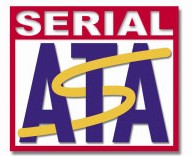HomeRF
 Next
on our must see list was a demonstration of Intel's HomeRF wireless home networking
technology. Although we will not go too in-depth about the inner workings of
HomeRF (look for that in an upcoming review of it's own), lets take a quick
glimpse at what Intel says that HomeRF can do.
Next
on our must see list was a demonstration of Intel's HomeRF wireless home networking
technology. Although we will not go too in-depth about the inner workings of
HomeRF (look for that in an upcoming review of it's own), lets take a quick
glimpse at what Intel says that HomeRF can do.
Currently running at a frequency of 2.4GHz and able to transmit at a speed of 1.6 megabits per second, HomeRF promises to change the way that your home computers and appliance interface with one another. Basically showing a few products using HomeRF technology as well as going very in-depth about the HomeRF spec, this hour-long presentation was quite interesting. It also happened to be one of the most packed tracks at the show, with people sitting on the floor and having to listen to the presentation from the hall.
As I mentioned before, this is only a small bit of what we learned during this speech. Look for a review in about a week that details this technology much more.
Serial ATA
 Another
technology that promises to change your computer and its devices inside out,
we first reported on Serial ATA (SATA) at last spring's IDF. Detailed information
of this technology can be found in that review, but for now here are
some additional things we learned at Silicon Image's demonstration.
Another
technology that promises to change your computer and its devices inside out,
we first reported on Serial ATA (SATA) at last spring's IDF. Detailed information
of this technology can be found in that review, but for now here are
some additional things we learned at Silicon Image's demonstration.
It seems that serial ATA technology is inevitable, with the limits of current parallel ATA quickly approaching. In fact, Silicon Image states that the current ATA solution, ATA100, is pretty much the limit of speed that parallel ATA can handle.
With the introduction of serial ATA, Silicon Image promises transfer rates as high as 1.5 Gb/s with the initial product release and 3 GB/s on the very near horizon. With backwards compatibility, the transition to serial ATA promises to rather smooth. Although not many more details were given that were different from our initial serial ATA preview, we did manage to snap a few pictures of serial ATA in action. Although the demo system only made it halfway through a Windows98 bootup, it proved that data was being transferred over the serial ATA bus, as well as showing that the product is far from done.
The demo unit that Silicon Image had set up included a standard parallel ATA hard drive controller, interfacing with a dongle of sorts that converted the signal to serial ATA and sent it through a very skinny cable. This cable then plugged directly into a second dongle that converted the signal back to parallel ATA which allowed it to interface with a standard hard drive. Although the data was able to travel through the cable at the serial ATA speed of 1.5 GB/s, the devices at both ends were still limited to the standard parallel ATA speeds. We have pictures of all of these setups, as well as additional information regarding serial ATA, and be sure to check back in our IDF summary for all of this information.










0 Comments
View All Comments